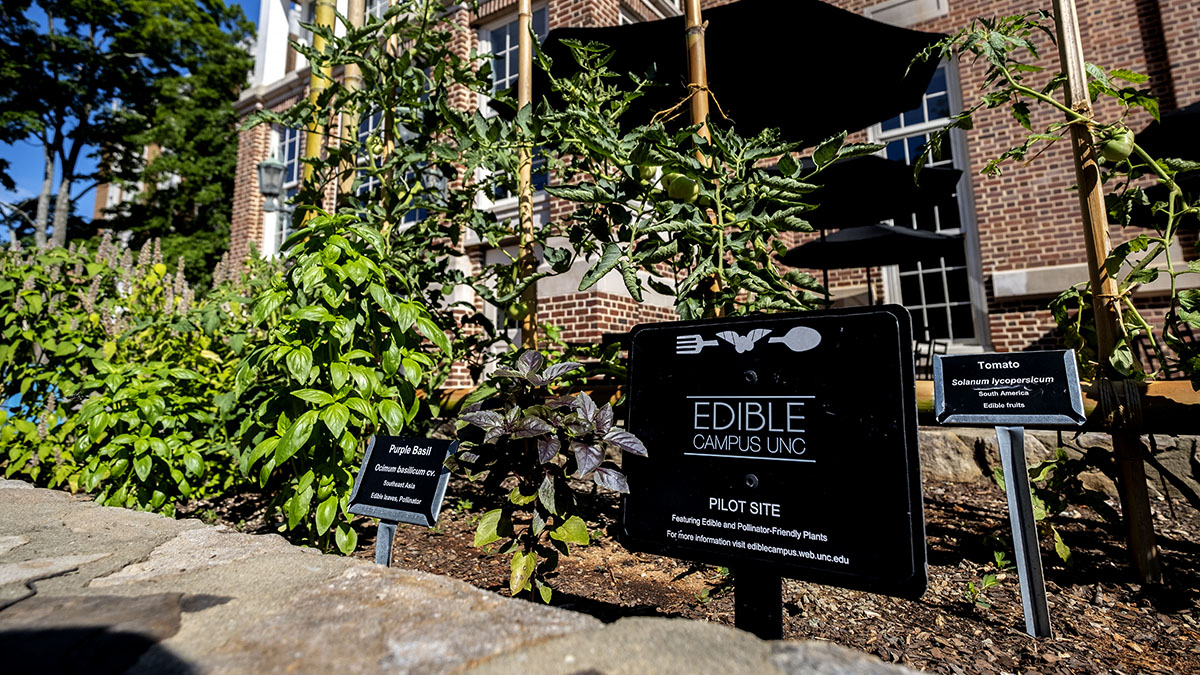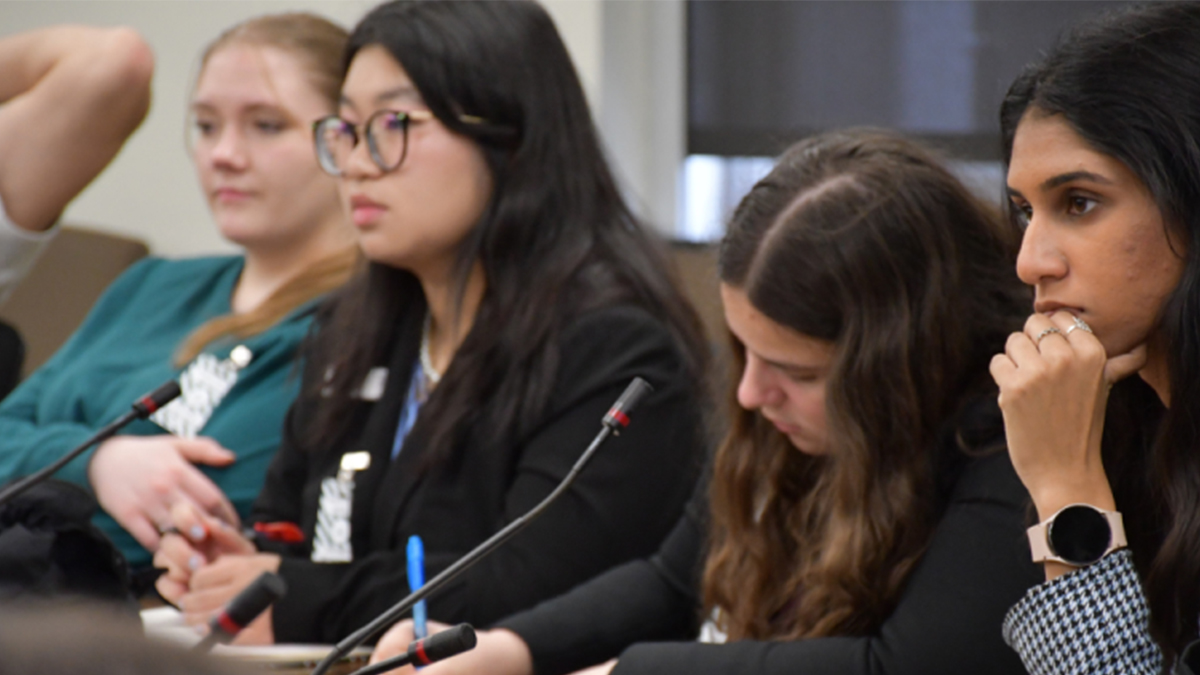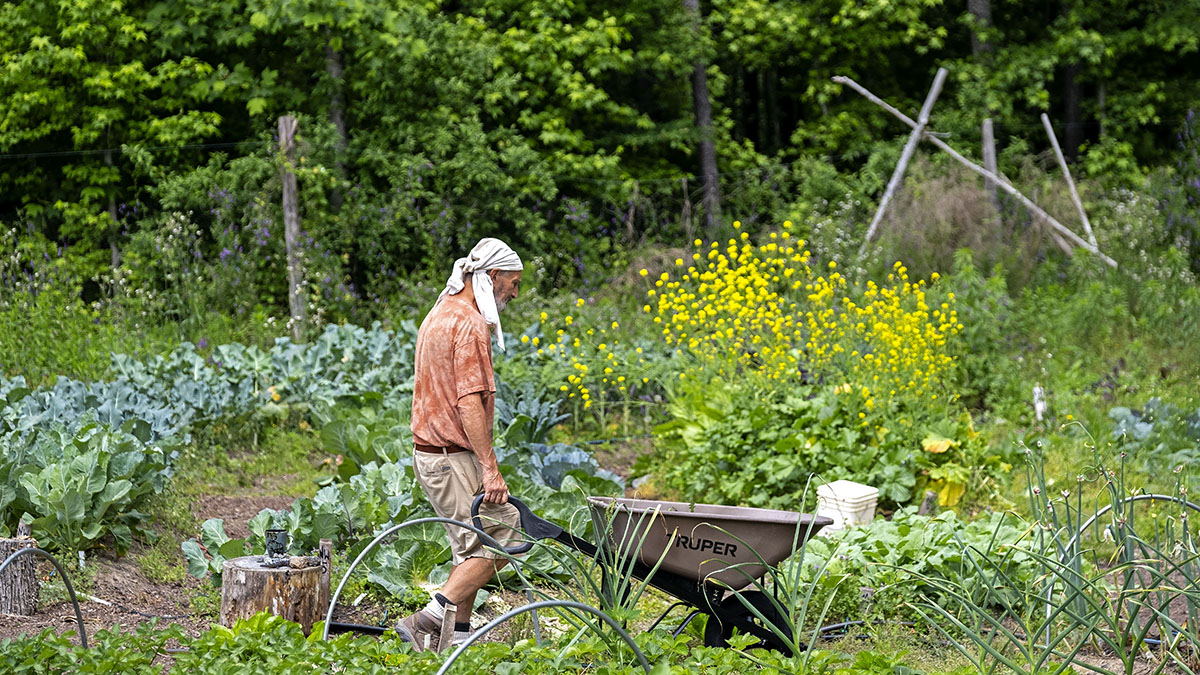New Edible Campus interactive map guides foragers to what’s in season
Each semester the organization plants fruits, herbs and vegetables across 11 “satellite” gardens on campus, but in the spring they cultivated something new: an interactive online map to help Tar Heels find and use these public gardens.

A summer walk through Carolina’s campus brings the scent of fresh rosemary and basil, but from where? Bright red tomatoes hang from a vine outside Lenoir Dining Hall. When did they get there? A tiny sign marks even tinier blueberries as they peek from behind full leaves in front of Davis Library.
This fresh produce is available to anyone on campus, thanks to Edible Campus, a program of the North Carolina Botanical Garden that is run by a team of two employees and host of student garden managers, interns and volunteers.
Each semester the organization plants fruits, herbs and vegetables across 11 “satellite” gardens on campus, but in the spring they cultivated something new: an interactive online map to help Tar Heels find and use these public gardens.
An interactive map has been in the works almost since the edible landscaping initiative began in 2015, said Laura Mindlin, the botanical garden’s Edible Campus coordinator. Kyle Parker, Edible Campus horticulturalist, is the other botanical garden employee on the team.
“Whenever we’re out in the gardens working, we are approached by several people with questions about the different crops,” Mindlin said.
Edible Campus’ creative answer to these questions is an interactive map with a fork and knife icon marking the location of each garden. Users can view a list of all the gardens, the plants located there and links to recipes.
The interactive map shows what produce is in season, how to know it is ready to harvest, how to prepare it, and its nutritional value. The web page also includes recipes for popular dishes —all compiled by Edible Campus students.
This interactive online plant map, Mindlin said, will greatly increase the number of people harvesting from the program’s satellite gardens.
“I think the biggest barrier to people foraging from the Edible Campus gardens and engaging with the spaces has been this gap in education,” she said. “We are providing food for the Carolina community, but we are an education program at
our roots, so we want to make sure we were providing this supplemental information.”
Back to the roots
Edible Campus began in spring 2015 as Carolina alumna Emily Auerbach’s senior honors thesis assessing the agricultural potential of the University campus. Since then, the idea has grown into a campus-wide edible landscape with 11 green spaces filled with edible, medicinal and pollinator plants. Edible Campus also manages a quarter-acre production garden behind Davis Library in the heart of campus; however, this space supplies the student-run food pantry, Carolina Cupboard, and isn’t open to the general public.
The development of the interactive plant map officially began in fall 2017 with computer science professor Diane Pozefsky’s software engineering lab. Four computer science students came up with the concept for an interactive webpage for Edible Campus as part of their class’ community partner project.
They created a lot of the back-end work for the application, but after those students graduated, a new set of computer science majors picked up the project. Last year, the new students revamped the map and gave it a more professional looking design. Over 50 students and community members contributed to the cultivation of information for the web page.
Some of these design decisions were made by Edible Campus communications intern Angel Santaloci, who encourages people to use the map and the gardens.
“Instead of going to the grocery store, why not just use the map and see what might be available and fresh in one of these gardens,” Santaloci asked.
Part of the mission
A rise in healthy and sustainable living trends makes Edible Campus look appealing to incoming students and new faculty as well.
Mindlin said Edible Campus fits right into the University’s mission of an educational landscape that fosters critical thinking because sustainable living is about understanding the greater contexts of the food we eat and our surrounding environment.
“When Edible Campus was started, it was looking at this growing divide between people and the food growing process and wanting to reestablish that connection,” Mindlin said. “The campus community is ready to learn more about the food that nourishes them, how they can use our plants like lavender and chamomile to make herbal teas to de-stress, and so much more.”
This fall, they’ll expand to new student organizations, collaborations with different departments on campus to create their own gardens and a larger variety of plants in the gardens, making sure the gardens are not only aesthetically pleasing, but also functional for everyone.




